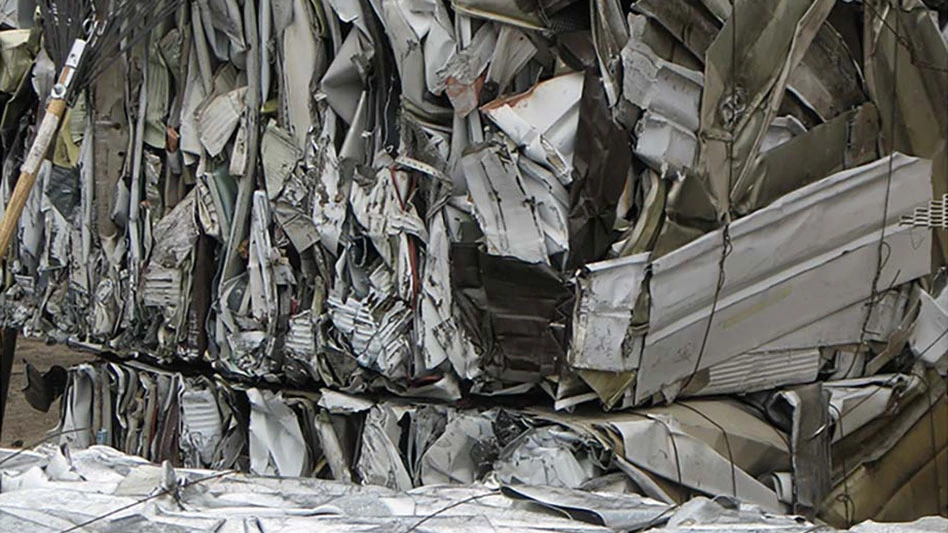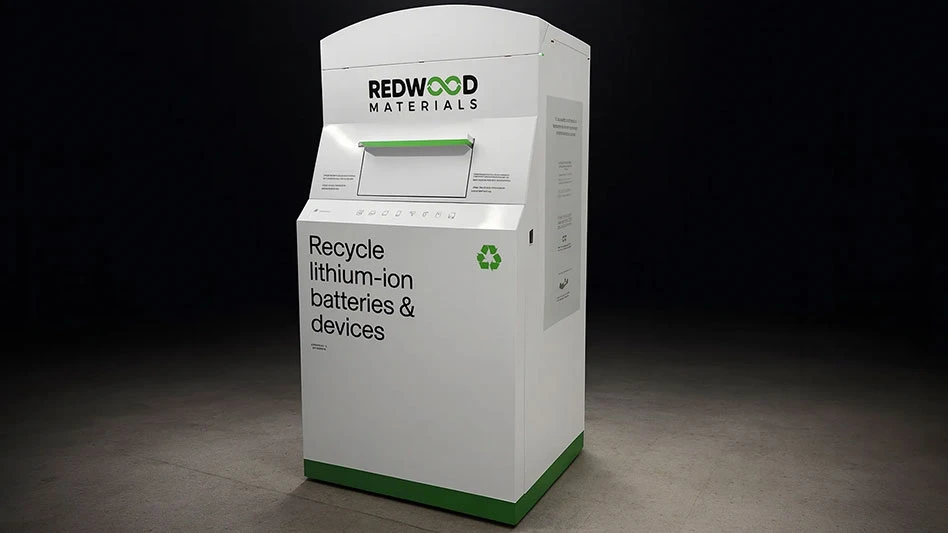Over the past several quarters, a number of paper and paperboard mills have been closing. Other paper companies have announced ambitious merger arrangements, while other paper manufacturers are shedding mills that do not fit into their core business.
For recycling companies, the changes are also profound. While acquisitions by many of the larger companies have slowed, there have been a number of notable moves by some companies to strengthen their operations. Meanwhile, sluggish markets have forced other operations to close their doors.
While the overall scrap paper market appears somewhat listless, there are notable exceptions. Several office grades, considered dormant less than a year ago, have been finding surprising strength. At the same time, grades such as old corrugated container have been under tremendous pressure due to market forces and have created tremendous problems for the industry.
The reality of the market now is that these changes, among others, are changing the face of the recycling industry. More changes are expected over the next several years. The final position is still unclear, although there are a number of clues on where it may end up.
Change Comes From Upstream
The biggest key for the paper recycling industry is the rapid change the paper industry is taking. Traditionally, paper companies often owned plants in various commodity segments. Companies may have operated newsprint mills, containerboard mills, and mills dedicated to printing and writing papers. This approach allowed these companies to enjoy improvements in market conditions in any of these commodity segments.
However, over the last several years this trend has been under siege. A host of paper companies have opted out of different segments to improve their fiscal bottom line. The plan follows a trend of companies selling off non-core assets. One of the most recent announcements is Champion International’s decision to sell its Texas newsprint facilities and recycling plants to Donohue. That move, according to Champion, was done so the company could focus more closely on its core area of business.
Kimberly-Clark also adopted this move when it opted to sell its Coosa Pines, Ala., newsprint mill to Alliance Forest Products, citing its plan to focus more carefully on its tissue business.
Fort James, one of the largest tissue manufacturers in the world, also announced that it would close several tissue operations as part of a move to consolidate its tissuemaking operations.
The announcement this past spring that Stone Container and Jefferson Smurfit would merge their operations has added to the changing dynamic of the industry. According to Jaakko Poyry Consulting, Tarrytown, N.Y., the two companies, separately, are two of the five largest consumers of recovered fiber in the world. Merging the two would create by far the largest consumer of recovered fiber in the world.
While divestitures, acquisitions and mergers are speeding up in frequency, there are expected to be a number of other "big deals" in the next several months. Grupo Durango, one of the largest paperboard makers in Mexico, recently took several steps to become a more significant player in the North American board industry, first with the acquisition of McKinley Paper, a recycled paperboard mill in Prewitt, N.M., and secondly with the purchase of Four M Corp., a company with a strong network of box plants throughout the U.S.
Sources indicate that Durango may be looking to make further acquisitions in the U.S. market, which would give the company an even bigger share of the North American board industry.
In the newsprint sector, there is a shrinking group of newsprint makers in North America. Abitibi-Consolidated, through the merger of Abitibi-Price and Stone Consolidated, became the largest newsprint manufacturer in the world. Despite a strike that has closed some ten mills through most of the summer (and they remain closed at press time), the company has become more narrowly focused on the newsprint industry, not just in Canada, but throughout the world.
One step taken for A-C to become a major player in the newsprint industry was the recent joint venture with Norske, a Scandinavian company, and Hansol, a Korean company, to own and operate a number of newsprint machines in Asia. The move gives the combined company a major step up in leverage in the Asian newsprint market.
Grading the Grades
The overall market for ONP, unlike many other grades, is more upbeat. There are a number of reasons for the improved outlook, including a pickup in orders to China and stronger than expected buying by domestic paper and paperboard mills.
The overseas market, which in the past would have been able to step in and absorb much of the tonnage, has been relatively quiet over the past several months.
The big concern now is the continued problems with the Asian market. Not only have grades failed to generate any significant, steady price and demand growth, there appears to be greater pressure to knock prices for some grades down even further. Part of the reason is the inability of overseas mills to display any consistent demand for the material. This is causing a steady slide in movement across the country.
For old corrugated, problems are expected to continue. OCC continues to be one of the biggest drags on the market. The grade has traditionally been a "bread and butter" grade for many vendors. Because of the volume of the material, vendors would handle far more tons of this grade than others.
And, in a traditional market, prices moved slowly and steadily. There was a predictable nature to the grade. Increases during the fall when demand for holiday orders came in; a slowdown after the first of the year and during the summer.
However, this market has been turned on its head. OCC markets, which started to decelerate this summer, are expected to continue the downward slide through the rest of this year and likely into next year. The reasons for the slide are many, starting with a shaky overseas market, matched with significant downtime being taken at board mills across the country.
Pete Grogan, a manager-market development with Weyerhaeuser, Tacoma, Wash., estimates that by the end of the year around one million tons of containerboard will be displaced due to market downtime. Factoring in higher generation during the fall, markets could be in for continued pressure.
Other vendors agree with the assessment, noting that without any concerted growth in the shipments of OCC offshore it is unlikely there will be a pickup in price and demand.
The result is more OCC backing up at packing plants across the country. The situation is expected to exacerbate over the next several months with the increase in generation.
With these negatives in place, there is little optimism that present market conditions will allow markets to improve through the rest of this year and into next year.
Old news is starting to improve. Over the past several months the old news market has been finding some stability. Higher prices are a cause of optimism. The question many ask is how long the grade will continue its upward price arc. Newsprint producers are still unable to push through a price increase, although several newsprint producers are expected to push through a price increase within the next several months. Several factors, however, could affect a price increase. A key is the continued strike at Abitibi-Consolidated mills in eastern Canada. At press time, union workers at ten Canadian mills were going to begin negotiations. While a price increase could take hold, the resumption of work at these mills could quell the chance of holding a price increase.
With the possibility of higher newsprint prices, there could be better prices for ONP, an integral raw material for many mills.
A positive sign for the ONP market on the export side has been the increase in purchases by China. While there has been an improvement in shipments to this region, the trend is filled with uncertainty. Traditionally, China has been an inconsistent buyer. The question some vendors ask is whether Chinese buying can evolve into a steadier, month-to-month program. If it can, the ONP market could respond positively.
Office grades are generating the most differences in opinion. Problems on the export side continue to haunt the industry. Prices for grades such as sorted white ledger and office pack have been negatively affected. With all the movement taking place, several of the newer deinking facilities have re-opened. The question now being asked is if these mills will be able to continue to run at enough of a level to make the operations a success.
Recently American Fiber Resources and Great Lakes Pulp and Fiber announced they would merge their operations, with the goal of strengthening operations. If. combined, they can both buy the raw material and sell the finished product more profitably, there could be some opportunities to acquire or move into other operations.
The author is senior editor of
Recycling Today.Sidebar:
Largest Recovered Fiber Consumers
Largest Consumers of Recovered Fiber in the World
1. Jefferson Smurfit Group – 4.4 million tons a year
2. SCA – 2.5 million tons a year
3. Stone Container – 2.4 million tons a year
4. Ft. James Corp. – 2.4 million tons a year
5. Oji – 2.2 million tons a year
6. Weyerhaeuser –2 million tons a year
7. Kimberly-Clark Corp. – 1.7 million tons per year
8. International Paper – 1.6 million tons per year
9. Settsu – 1.5 million tons per year
10. Haindl – 1.5 million tons per year
Source: Jaakko Poyry Consulting
Largest Consumers of Recovered Fiber in North America
1. Weyerhaeuser
2. Fort James
3. Stone Container
4. Jefferson Smurfit Corp.
5. Georgia-Pacific Corp.
6. Rock-Tenn
7. International Paper
8. Inland Container
9. Newark Group
10. Wilamette Industries
Source: Jaakko Poyry Consulting
Latest from Recycling Today
- Ford pivots away from EVs
- McNeilus to showcase advanced refuse, recycling technology at CES 2026
- Greyparrot report highlights improving recycling efficiency
- SWANA, NWRA, ReMA release guide to improve MRF battery management
- World Bank predicts steady 2026 metals pricing
- Nucor sees tighter margins to close out 2025
- Liberty Tire announces $1.4M equipment upgrade at North Carolina facility
- Kansas City, Missouri, to receive $5M grant from EPA





